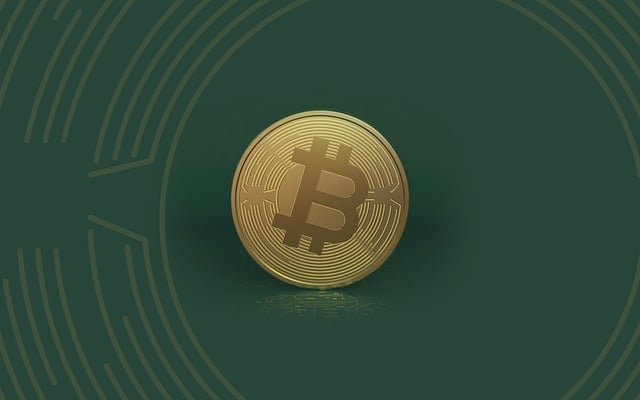Stablecoins are crucial for decentralized finance (DeFi) by providing price stability pegged to fiat currencies, minimizing volatility, and facilitating secure transactions. Their role in DeFi insurance and wallet security attracts both crypto enthusiasts and risk-averse investors. Monetary policy influences stablecoins' value and market trust, with robust frameworks solidifying their position in the digital economic revolution. DeFi insurance pools leverage decentralized protocols to protect users from smart contract vulnerabilities and market volatility, fostering trust within the DeFi community. Regulators face challenges integrating stablecoins into traditional finance while ensuring consumer protection, focusing on DeFi insurance and secure wallet management for user funds in decentralized applications (dApps). Future advancements in protocols, innovations like DeFi insurance, and blockchain upgrades will drive the growth and appeal of stablecoins.
“Stablecoins, a pivotal component of the growing cryptocurrency landscape, are revolutionizing decentralized finance (DeFi). This article delves into their intricate role within DeFi ecosystems. We explore how stablecoin monetary policy influences cryptocurrency stability and examines the emergence of DeFi insurance as a protective measure for these assets.
Additionally, we highlight the critical aspects of enhancing wallet security in the decentralized space, while also addressing regulatory considerations hindering widespread stablecoin adoption. Finally, we peer into the future, analyzing evolving stablecoin protocols and their impact on market dynamics.”
- Understanding Stablecoins and Their Role in DeFi
- The Impact of Monetary Policy on Cryptocurrency Stability
- DeFi Insurance: A New Layer of Protection for Stablecoins
- Enhancing Wallet Security in the Decentralized Space
- Regulatory Considerations for Stablecoin Adoption
- Future Prospects: Evolving Stablecoin Protocols and Market Dynamics
Understanding Stablecoins and Their Role in DeFi

Stablecoins are digital assets designed to minimize volatility, often pegged to the value of a fiat currency like the US Dollar or Euro. This stability makes them a cornerstone in the decentralized finance (DeFi) ecosystem, where transactions and lending require predictable exchange rates. In DeFi, stablecoins facilitate seamless transfers and lending/borrowing activities without the risks associated with volatile cryptocurrencies.
Their role in DeFi insurance and wallet security cannot be overstated. Stablecoins offer a safe haven for investors looking to protect their assets from market fluctuations. Moreover, they serve as a bridge between traditional finance and decentralized platforms, attracting both crypto enthusiasts and risk-averse investors. With robust DeFi protocols, users can access advanced features like yield farming, liquidity provision, and decentralized exchanges while relying on stablecoin reserves to safeguard their funds within secure wallets.
The Impact of Monetary Policy on Cryptocurrency Stability

Monetary policy plays a pivotal role in maintaining stability within cryptocurrency markets, especially those rooted in decentralized finance (DeFi). Central banks and regulatory bodies wield tools like interest rate adjustments and currency issuance to manage inflation and support economic growth. In the context of stablecoins, these policies can significantly influence their value and market trust. For instance, strict monetary control over a nation’s digital currency might enhance investor confidence, driving up the demand for stablecoins backed by fiat currencies. Conversely, volatile monetary actions could trigger uncertainty, prompting investors to seek safer assets, including traditional cryptocurrencies with robust DeFi insurance mechanisms and wallet security features.
The stability of cryptocurrency markets is intricately tied to the broader economic landscape shaped by monetary policies. Effective governance ensures that digital currencies remain a viable alternative to traditional finance, fostering innovation in areas like decentralized lending, borrowing, and asset management. As the DeFi space matures, robust monetary policy frameworks will be essential for attracting both individual investors and institutional players, thereby solidifying the position of stablecoins as a cornerstone of the digital economic revolution.
DeFi Insurance: A New Layer of Protection for Stablecoins

In the dynamic landscape of decentralized finance (DeFi), the concept of DeFi insurance has emerged as a game-changer, offering enhanced protection for stablecoins. This innovative layer of security addresses the growing need for wallet security in the DeFi space. Stablecoins, while providing a crucial bridge between traditional finance and cryptocurrencies, face unique risks, including smart contract vulnerabilities and market volatility. DeFi insurance steps in to mitigate these dangers by utilizing decentralized protocols that safeguard funds within users’ wallets.
Through advanced algorithms and community-driven oversight, DeFi insurance pools offer a collective defense against potential hacks or market crashes. Users can participate in these pools, ensuring their stablecoins are protected while they engage in various DeFi activities. This revolutionary approach to monetary policy not only bolsters the stability of decentralized currencies but also fosters trust and encourages adoption, marking a significant development in the evolution of digital finance.
Enhancing Wallet Security in the Decentralized Space

In the decentralized finance (DeFi) space, enhancing wallet security is paramount as users navigate a landscape where traditional safeguards like centralized banks are absent. Stablecoins, a key component of DeFi, introduce unique risks and opportunities for wallet security. While their price stability is appealing, users must guard against potential vulnerabilities such as smart contract flaws or exploits.
DeFi insurance emerges as a crucial solution to bolster wallet security in this environment. By leveraging decentralized protocols and community-driven risk pools, DeFi insurance aims to protect investors from financial losses stemming from smart contract failures or hacks. This innovative approach empowers users to participate in DeFi with greater peace of mind, knowing their assets are partially insured against unforeseen events, thereby fostering a more robust and secure decentralized ecosystem.
Regulatory Considerations for Stablecoin Adoption

The adoption of stablecoins, a unique type of cryptocurrency designed to minimize volatility, presents both opportunities and challenges for the financial sector. Regulatory bodies worldwide are navigating complex issues to facilitate their integration into the mainstream financial system while ensuring consumer protection and market stability. One of the primary concerns revolves around DeFi (decentralized finance) insurance and wallet security, as stablecoins often interact with decentralized applications (dApps). Regulators must establish guidelines for insuring user funds stored in these digital wallets, especially considering the decentralized nature of blockchain technology.
Additionally, stablecoin issuance and backing mechanisms require scrutiny to maintain stability. Central banks and financial watchdogs are exploring ways to supervise the reserve assets that support these coins, ensuring they remain adequate and diverse. The regulatory framework for stablecoins must address potential risks, such as market manipulation and liquidity issues, while harnessing the benefits of enhanced cross-border payments, reduced transaction fees, and improved access to financial services, especially in regions with limited traditional banking infrastructure.
Future Prospects: Evolving Stablecoin Protocols and Market Dynamics

The future prospects of stablecoins are promising, with evolving protocols that enhance their functionality. As the decentralized finance (DeFi) ecosystem matures, stablecoins are expected to play a pivotal role in providing liquidity and fostering market stability. Newer protocols are focusing on improving transparency, security, and efficiency, integrating features like DeFi insurance and robust wallet security measures. This evolution is crucial in gaining user trust and encouraging wider adoption, especially as more investors enter the DeFi space, seeking secure and reliable avenues for their digital assets.
Market dynamics will continue to shape the stablecoin landscape, with competition driving innovation. As stability mechanisms become more sophisticated, we can anticipate enhanced risk management tools and better pricing algorithms. The integration of blockchain technology advancements, such as Layer 2 solutions, will further optimize transaction speeds and reduce costs, making stablecoins even more attractive for various financial applications, including cross-border payments and decentralized lending.
Stablecoins, an integral part of the decentralized finance (DeFi) ecosystem, have evolved beyond simple price stability mechanisms. With the integration of DeFi insurance and enhanced wallet security measures, these assets are becoming more robust and accessible. As regulatory considerations gain traction, the future prospects for stablecoin protocols and market dynamics look promising. This evolving landscape offers both opportunities and challenges, with DeFi insurance playing a pivotal role in fostering trust and encouraging wider adoption across the decentralized space.
